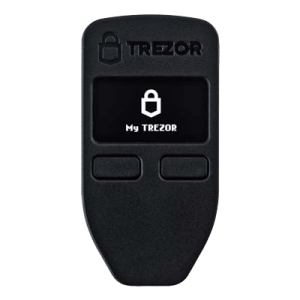So you want to know about cryptocurrency, do you?
If you’re here reading this now odds are good you don’t have the complete roadmap to get involved. You’ve maybe seen some ads online for Wealthsimple Crypto and thought you’d maybe like to get some crypto for yourself, but don’t know where to start.
You’re in luck. Getting into cryptocurrency today is vastly different from when I first started back in 2015 and that’s a good thing.
There’s lots more exposure. It’s no longer the purview of geeks with pocket protectors and LAN parties. Now it’s big business with multiple different sectors popping up to capitalize on what’s been a whirlwind of market opportunity.
The learning curve is also considerably less steep. There are plenty of places on the internet where you can learn the basics—like Proof of Work mining and the difference between a hot or cold wallet.
Also thankfully, gone are the days of paper wallets with the dot matrix printers we used to print them. You don’t need a virgin computer anymore—a computer you use just to connect to the internet to do your cryptocurrency activities and then promptly pull off—now you can buy crypto from an application on your phone and have a reasonable expectation that it’ll still be there the next time you log in.
There are also new risks such as increased regulatory scrutiny and new scammers trying to get paid in Bitcoin and we’ll discuss those too, but in the intervening years since Bitcoin first made an appearance back in 2009, we’ve figured out quite a few things and eliminated some of the superfluous and time consuming steps.
So here are four steps to getting into crypto.
Decide your own Level of Involvement
It’s important that you give this some serious thought. Getting into cryptocurrency involves a fair amount of risk so doing a little bit of research never hurt anyone. If you’re just starting out and you’re thinking about picking up some Bitcoin, Litecoin or Ethereum, knowing when the halvings are for the first two coins could be important in your decision making.
If you’re not a coder or somehow interested in doing business on a blockchain like Ethereum such as building decentralized applications or utilizing smart contracts, then most of your cryptocurrency useage is going to be speculative. That means setting your buy and sell prices. It could potentially mean dollar-cost-averaging.
If you’re no longer a beginner and you recognize the potential utility of smart contract platforms like Ethereum or Cardano, then making a decision to get in on the ground floor with either of these should include some historical knowledge of how these two coins (or others in the niche) have performed.
When you’ve made the decisions regarding the currency, how much and what you’re going to do with it, it’s time to pick an exchange that best suits your plans.
Pick Your Cryptocurrency Exchange
What you’re looking for in determining if an exchange is right for you are the trading fees, security, and a little something about the history of the exchange if you can find it. Crypto exchanges have gotten themselves into regulatory hot water over the past little while, and it’s best to know how your exchange has and will react when steeper regulations come down from Ottawa.
There are a few types of onramps for cryptocurrency and generally they come in various levels of difficulty, ranging from newbie to advanced user. Roughly, digital asset management platforms like LQwD Fintech’s (LQWD.V) Coincurve, or Coinberry’s platform, provide a tradeoff of convenience in the form of ease of use for high percentage rates. These generally fail the trading fee category.
If you’re a bit more experienced with cryptocurrency, or don’t mind doing a little research to avoid the 8% cost you’re going to pay for convenience, you’ll find places like Coinsmart (SMRT.E) and WealthSimple Crypto there to fill the gap.
Coinsmart

Trading fees: 0.2%
Security: 95% cold storage
Signup bonus: $30
- Extremely low trading fees (0.2%)
- 24/7 customer support available via phone, live chat or email
- Instant account verification
- Supports 16 cryptocurrencies
- Registered Marketplace by the Ontario Securities Commission
- Immediate deposits and withdrawals
- User-friendly for both beginners and advanced traders
- 95% cold storage policy keeps your crypto extra secure)
But if you’re sufficiently more experienced with cryptocurrency, then you know to hop right on over to the established exchanges, like Crypto.com, Newton and Netcoins. These offer the best possible fees and top notch security.
Netcoins, especially. They’re a subsidiary of Bigg Digital Assets (BIGG.C), which has a forensic surveillance tool for the blockchain that observes traffic on a number of different blockchains and attaches information and actionable intelligence to certain wallet addresses. This exchange lacks in a few different categories—namely, the amount of coins—but its interface is intuitive and user friendly, especially for new folks.
For me, though, it’s the security option. When Netcoins is hacked sometime in the future by someone who hasn’t done their research, the company will stand a much better chance of finding where the money went and getting law enforcement involved to bring the hammer down.
Netcoins
Trade fee 0.5%
No deposit or withdrawal fees
Crypto withdrawals carry a nominal fee
Pick your wallet
The technology might change but the facts remain the same.
There are only two types of exchanges: those that have been hacked and those that will be hacked.
That’s why leaving your investment on an exchange is a fool’s bet and an excellent argument for why having a cryptocurrency application on your phone is also to be avoided. You can lose your sim card (or have it stolen) or damage your phone, and suddenly your entire investment is in jeopardy.
It was the same in 2015 and it’s the same now.
Wallets still come in two different varieties: hardware and software.
A software wallet is a proprietary multiple-signature (multisig) wallet on the internet. It requires a minimum of two different types of information to get into, and can be adequate and useful if you’re looking to buy some crypto at 9 a.m. and sell by 9 p.m. after a good day with the price action.
Personally, besides the enhanced functionality and presumably security, I don’t see much of a difference between leaving your money on an exchange and leaving it with a third-party wallet provider. Both can and will be hacked and given that we don’t have Canadian Deposit Insurance like the banks do, it’s basically gone when that happens.
Regardless, here’s a list of some of the best software wallets on the market:
Best Cryptocurrency Software Wallets of 2022 (at least according to Investopedia. I can’t speak to any of them.)
- Best Overall: Guarda Wallet
- Best for Beginners: Exodus Wallet
- Best for Bitcoin: Electrum
- Best for Mobile: Mycelium
- Best for Security: Guarda Wallet
- Best for Low Costs: Coinbase Wallet
Here you’re looking for security, ease of use, customer support and reasonable fees.
My personal taste is for the hardware wallet. It commonly comes as a USB plugin where you can upload, download, and safely store everything offline. The only problem is you’re going to have to pay attention to it over a matter of months because like any other USB device, it can become corrupted and malfunction.
A good rule of thumb is to buy a new one every two years or so.
My favourites are:
Trezor and specifically their Trezor Model 1.

Ledger Nano and specifically their Ledger Nano X

The instructions vary depending on the model, but the basics are you set up the wallet on your device (usually a computer but a tablet will probably work), write down your seed phrase multiple places offline, and confirm said phrase.
Protip: The recovery phrase is usually a long string of words with no rhyme or reason used as a password. Write it down. Get it right. Don’t take a picture.
Finally, understand that regulations are coming and that sometimes it’s best and most convenient to get with the program.
The Regulatory Shuffle
The exchanges listed above and plenty of others like them are compliant with the spate of regulations from Ottawa regarding how exchanges should operate. One of these includes Know Your Customer and Anti-Money Laundering regulations, which means giving over your information to the exchange to be shared with the government when they request.
What the Know Your Customer and Anti-Money Laundering regulatory regime means for you is you’ll need to show your passport or driver’s license.
You’ve likely heard of big name exchanges like Binance and Coinbase (COIN.Q). These have been around forever and made plenty of mistakes along the way, and those mistakes have led them into regulatory hot water. Binance is presently banned from operating in Ontario because of their unwillingness to comply with the Ontario Securities Act. They have been going back and forth with the regulator for the better part of two years trying to get reinstated, but so far no dice.
Coinbase has regular tussles with the United States Securities Exchange Commission (SEC) over whether or not they’re selling unlicensed securities. In particular, their Coinbase Lend program was deemed a security, and caused a kerfuffle when led to Coinbase no longer offering it.
You can, of course, choose to go with some of the global exchanges, but you’re going to need to make sure your bank will allow you to do business with said exchange. Some banks are stricter than others in this regard, but if you’re with a major bank like RBC or TD, it’s likely best to go with one of the cryptocurrency exchanges on their accepted list. You may be able to fund your KuCoin account from your bank account or credit card today, but there’s no guarantee that you’ll be able to extract funds from it tomorrow.
Keep in mind that this is the present state of cryptocurrency regulations right now. We’ll see how 2023 shapes up.
—Joseph Morton







